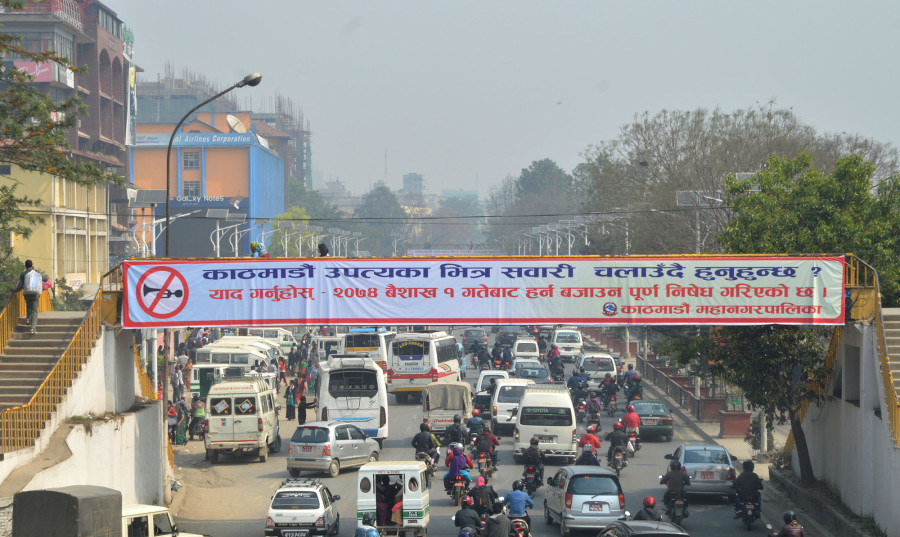Valley
Traffic Police Division announces plan to intensify ‘no horn’ campaign
The move is an effort to reduce sound pollution levels in the Capital, says the Kathmandu Metropolitan City
Anup Ojha
The Metropolitan Traffic Police Division is going to intensify its ‘no horn’ policy to control the increasing level of sound pollution caused by vehicle horns in the metropolis.
The division in association with the Kathmandu Metropolitan City on April last year had introduced the ‘no horn drive. The division’s report shows that in the past one year, 12,271 drivers of two wheelers, four wheelers and trucks were issued tickets for unnecessary honking in public spaces.
“We are going to intensify the ‘no horn’ regulation. The division is further going to consult with the metropolis regarding the issue,” said Superintendent of Police Basanta Panta, chief at the division.
“The division and the metropolis had launched an effective campaign, but its effectiveness lasted for about four months,” said Baburaja Maharjan, 43, from Naradevi. “I think the drive was a good initiative as it helped educate riders and drivers about noise pollution,” said Maharjan.
The no-horn rule is not applicable to ambulances, fire engines, police vans and other vehicles that are operated for emergency situations.
“Of late, honking in the city area has increased, which proves that the authorities have become lax in its implementation,” said Bijay Shrestha, a resident of Tinkune who owns an IT shop on the roadside. He added how concerned authorities’ bringing in new regulations and not giving continuity to them reflect the state’s disregard towards the well-being of its citizens. “It seems like these measures are mere publicity stunts. If only the traffic division took the ‘no horn’ policy as seriously as MaPaSe,” said Shrestha.
In the past one year, the division’s report shows 26,598 tickets were issued for MaPaSe or the anti drunk-driving campaign.
When asked what made the traffic police ineffective in conducting the ‘no horn’ policy, SSP Panta said that the division is working on the issue.
“We also have other issues to deal with. For example, we have intensified action in lane rule violation, wheel clamp for haphazardly parking vehicles and pick and drop system,” said Panta.
“The metropolis is going to conduct a second round of ‘no horn’ drive in coordination with the traffic police. We have been receiving complaints from the public regarding the issue,” said Ishwor Man Dangol, spokesperson at the metropolis.
According to division’s data, 1.18 million public vehicles operate daily in the Kathmandu Valley—921,917 motorcycles, 182, 331 cars, 84,282 buses and trucks, 6,330 micro buses and tempos, and 13,554 excavator and power trailers.
Although the division comes up with different plans and announcements every year, the plans lose steam after a period of time. In 2017, the division had come up with a new rule to fine up to Rs 200 for pedestrians jaywalking inside Kathmandu Valleys road, but the rule didn’t last for more than a few months. The metropolis and the division has also not been able to control the increasing traffic jams on the roads of the Valley, and the public has voiced its dissatisfaction over the unsystematic management of the ‘pick and drop’ drive in the core areas of Kathmandu.




 12.12°C Kathmandu
12.12°C Kathmandu.jpg)








%20(1).jpg&w=300&height=200)

